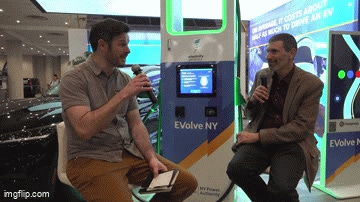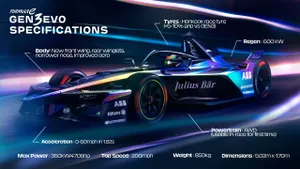How One State is Trying to Upgrade EV Infrastructure
A state-run program has taken the lead in increasing EV chargers in strategic locations.

At a Glance
- The EvolveNY Program is the New York Power Authority's statewide program to build up a statewide network of fast chargers.
- The program's goal is to eventually have a network of 400 charging sites.
Sales of electric vehicles, while increasingly rapidly, have in many cases failed to meet sales projections of both vehicle makers and industry analysts. The high price of the vehicles is arguably the most limiting factor, but the dearth of conveniently located, fast-charging infrastructure also continues to play a role.
New York State is trying to rectify this situation through its EvolveNY program under the New York Power Authority, the agency that oversees the state’s power grid.
During a press conference at the recent New York International Auto Show, John Markowitz, Senior Director for E-Mobility at the New York Power Authority, discussed the goals and challenges facing EvolveNY as it tries to bolster EV charging locations in a state with numerous roads and a major population center in New York City. Markowitz explained that the EvolveNY charging network was started in part due to a lack of private sector investment in electric vehicle charging stations in the vast state.
Starting from one charging station in upstate New York, the network has steadily expanded over the past four years and now totals 43, though the goal is to eventually have 400 sites, with each site typically having four chargers. Markowitz added that electric vehicle buyers are concerned first and foremost that charging stations are situated in the areas they plan to visit.
Building up a fast-charging infrastructure is not easy or cheap, Markowitz noted. He cited the high cost of constructing and maintaining the equipment, and the fact the utilities charge according to electricity consumption, which is not friendly to gradually building up a charging infrastructure. Besides changes in state regulations, Markowitz added that the passing of the Federal Infrastructure Act provided some needed funding for EvolveNY.
The availability of apps that identify EV charging locations is an important aid to drivers planning trips, Markowitz noted. The apps not only identify current charger availability but also future planned charging locations, which Markowitz believes will help potential future customers decide whether they might want to purchase an EV
One pressing issue, particularly in a large city such as New York, is creating charging stations accessible to EV users who do not have ready access to charging in their residences. Markowitz noted that creating Level 2 chargers with help from the Department of Transportation is crucial. Another challenge will be accommodating the increasing number of EVs used in rideshare fleets.
About the Author(s)
You May Also Like





